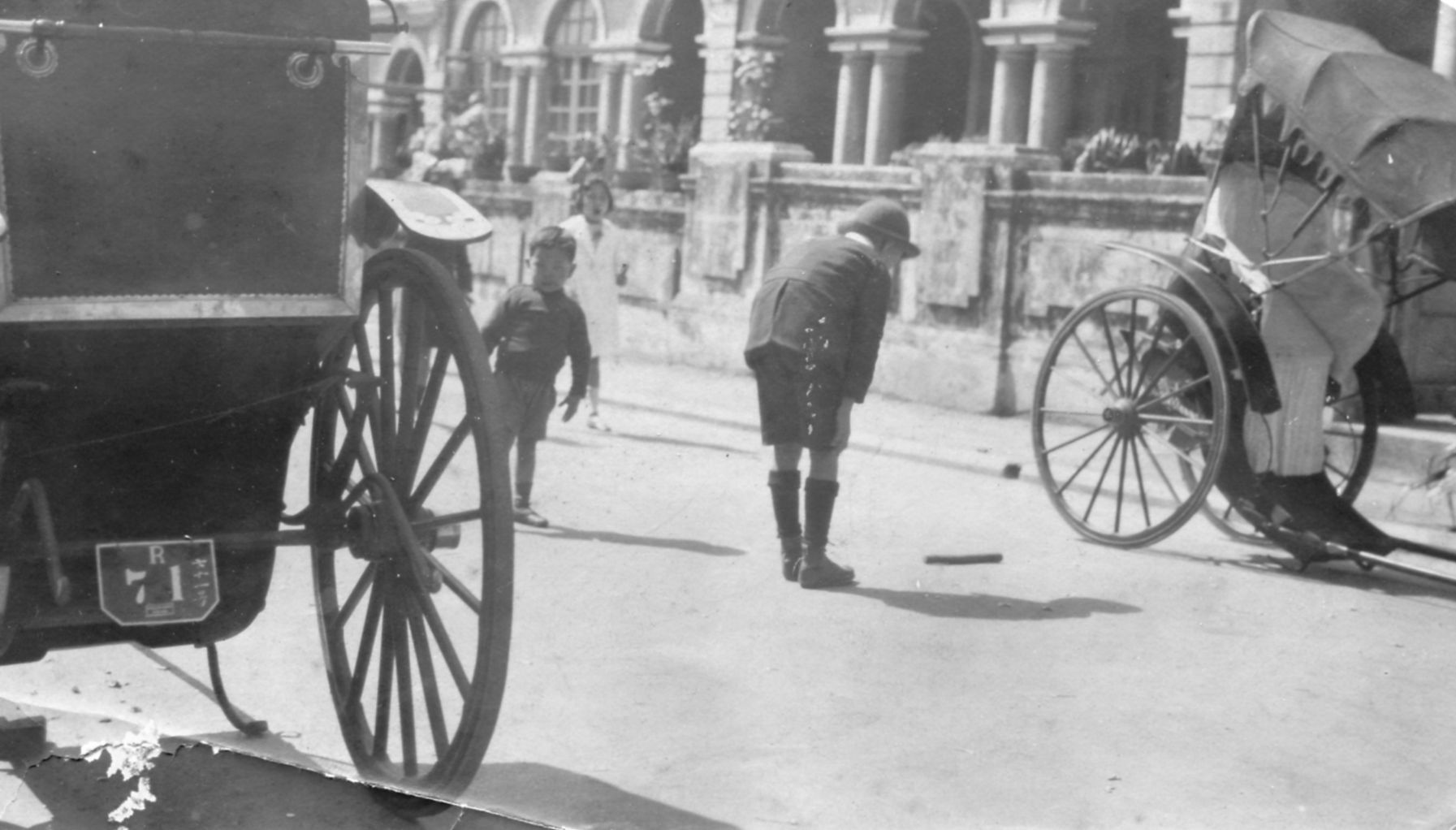Talu
by Jorge RemediosClick on the SEARCH icon and enter his ID number (10610) to be taken to his personal page
Talu is a game. Although it was played by Macanese, its origins lie elsewhere. It is similar to the English game variously called Tip-cat, Cat, Cat and Dog or One-a-cat. In Britain it was played at least as far back as the 17th Century (the "cat" was the talu). Senna Fernandes and Baxter, Maquista chapado Macau: Instituto Internacional de Macau, say it is a traditional Macanese game. Graciete Batalha, Glossário do dialecto macaense: notas lingüísticas, etnográficas, e folclóricas. Coimbra: Instituto de Estudos Românicos, states that it is a boy's game played by Macanese and Chinese, similar to bilharda played in Portugal, and to a game played in Indonesia. It was also played in the Middle East under various names – one of which, qalu in Arabic – sounds tantalisingly similar to talu. The basic requirements are just two sticks: a "bat" about 18 inches long and a talu or peewee which is a wooden dowel about 1 inch in diameter and 3 to 5 inches long, sharpened at both ends.

Talu
|

An old photo of a boy probably playing talu in the street.
|
As in baseball, the members of one team take their turn as batters in an innings while the other team fields.
The batter begins by flicking the talu with the bat from a hole in the ground as far as it will go. He can take a risk and flick it high and far or send it safely as a "grounder". The opposing fielders will try to catch the talu in the air or stop it on the ground.
If the talu is caught on the fly by a fielder, the batter is out. Points to the fielding team for the out are awarded according to the number of paces taken by the batter from the spot where the talu was caught to the starting hole. Tall guys or good leapers have a decided advantage, as it is the batter who makes the paces for the fielder's score.
If the batter is not caught out, he places his bat on the ground near the starting hole at right angles to the direction of the talu. A fielder picks up the talu where it has landed, and either tosses it or slides it across the ground in an attempt to hit the bat. The batter is out if the talu hits the bat.
If the talu misses the bat the batter starts by placing the talu near the starting hole and strikes down on one of its pointed ends with his bat to make it leap into the air. While it is airborne he gives it a good whack to send it flying as far as possible. (Here again, if the whacked talu is caught on the fly by a fielder, the batter is out.)
If the talu is not caught on the fly, the points for the batter are now determined by the number of paces taken by a fielder to cover the distance the talu was whacked. It is the fielder's turn to minimise the batter's score by taking large paces or leaps.
A skilled talu-ist, on getting the talu in the air, will handle it so nimbly that he can make it bounce a few times on the bat before giving it the whack that will send it a good distance away. The number of times that the talu is made to bounce on the bat becomes the multiplier of the points to be counted.
The batter repeats this twice more, starting each time from where he had managed to whack the talu, successively accumulating points. If he is caught out he loses all his points.
After the batter has completed his three attempts at whacking the talu, or is caught out, he retires and the next member of his team takes the bat.
The game ends when a predetermined score count is reached. The winner is awarded tabecs Tabecs are the reward for the winner and the penalty for the loser. The number of tabecs is either a predetermined number, or may be based on the point spread (I don't remember which). by the loser. For each tabec the losing player pitches the talu (usually a slow underarm lob) to the winner who hits it away with the bat and the loser has to scurry off to retrieve it.